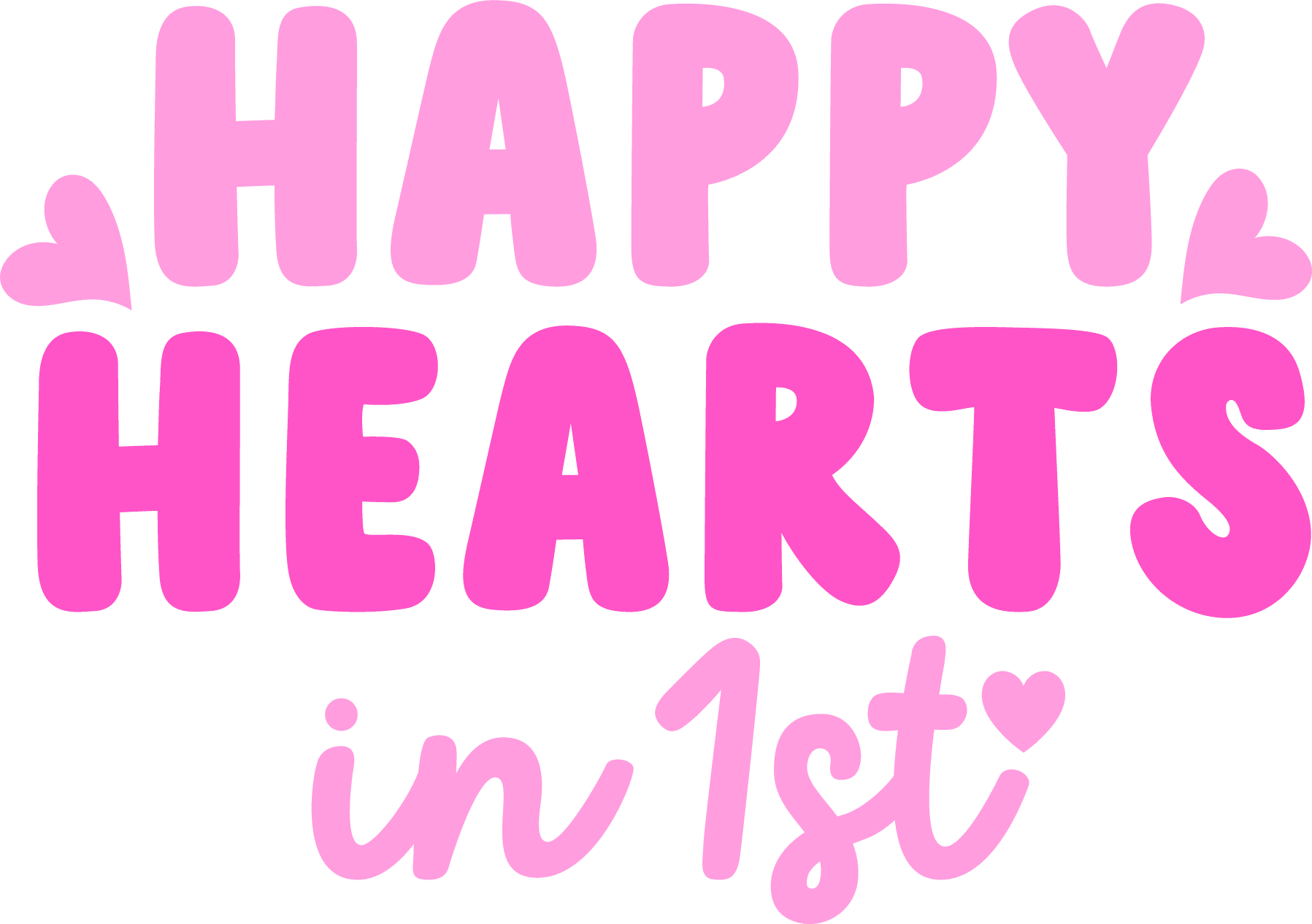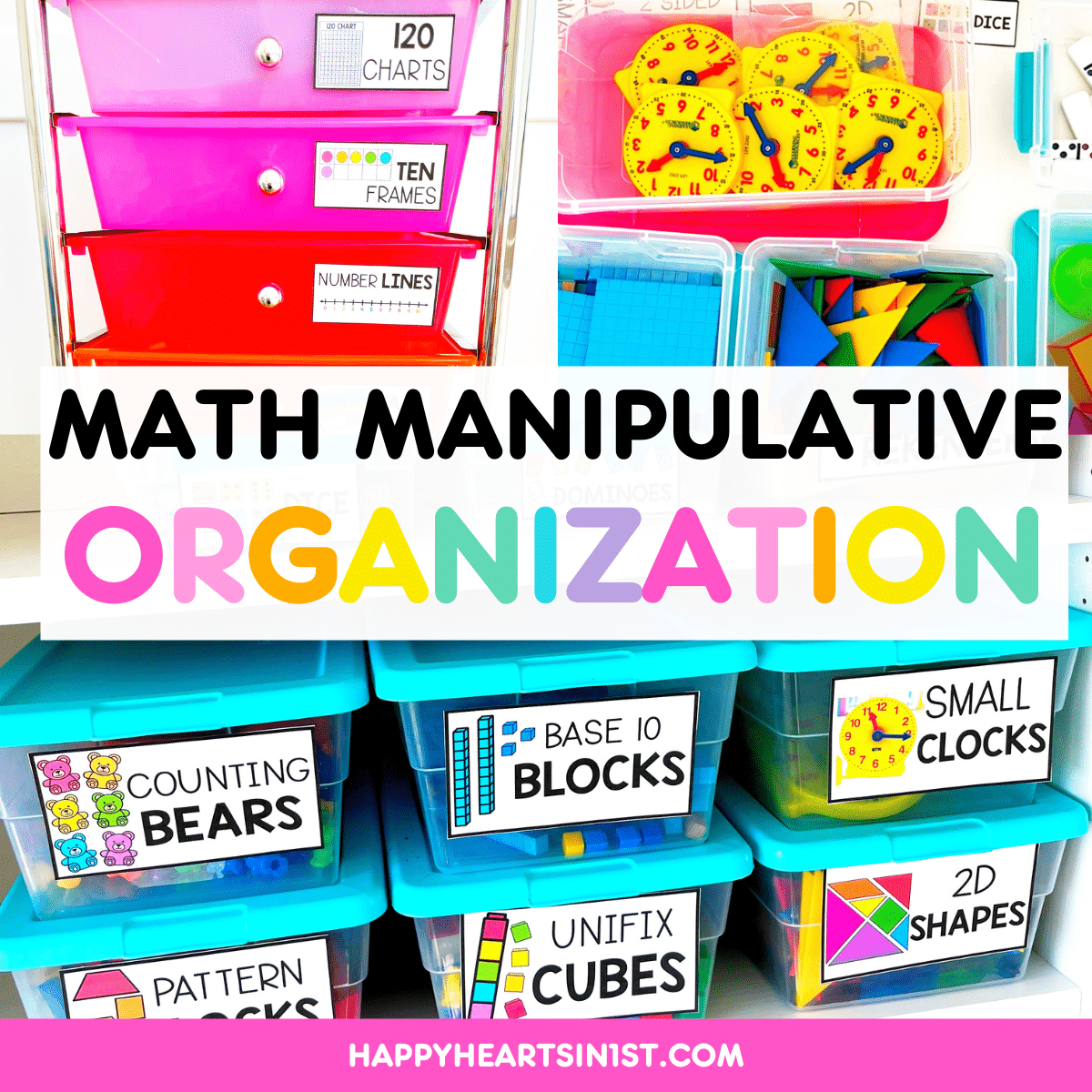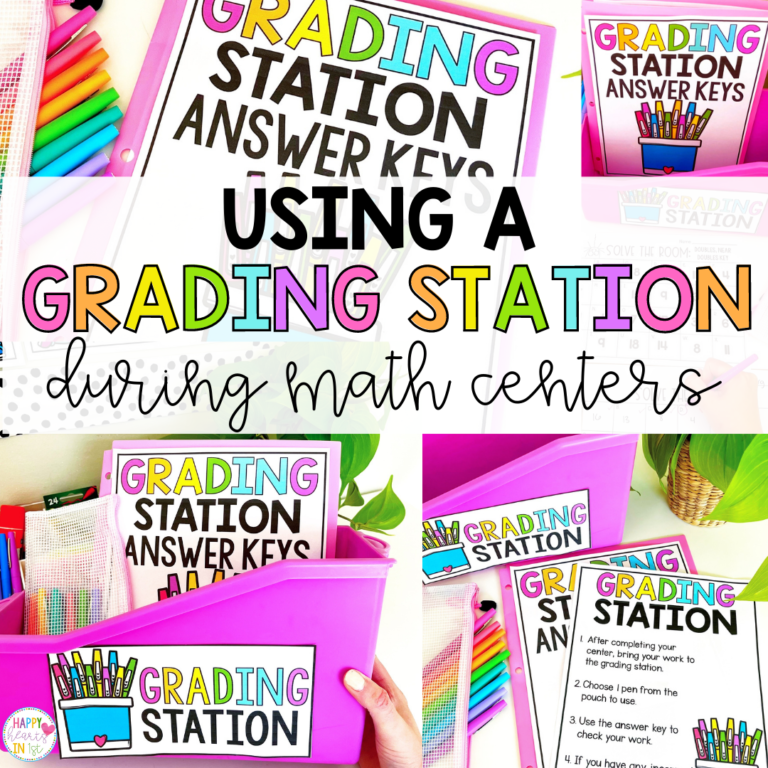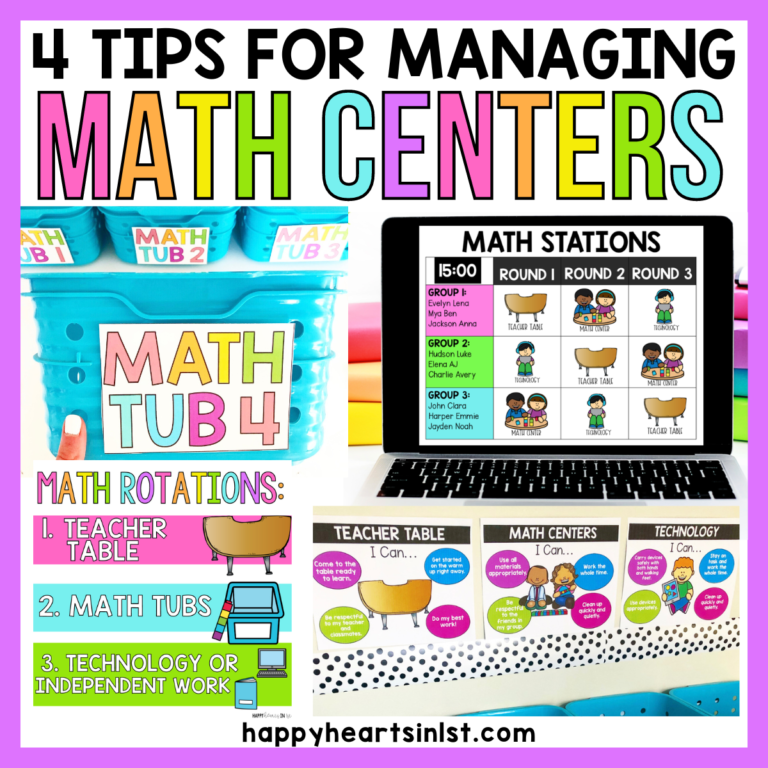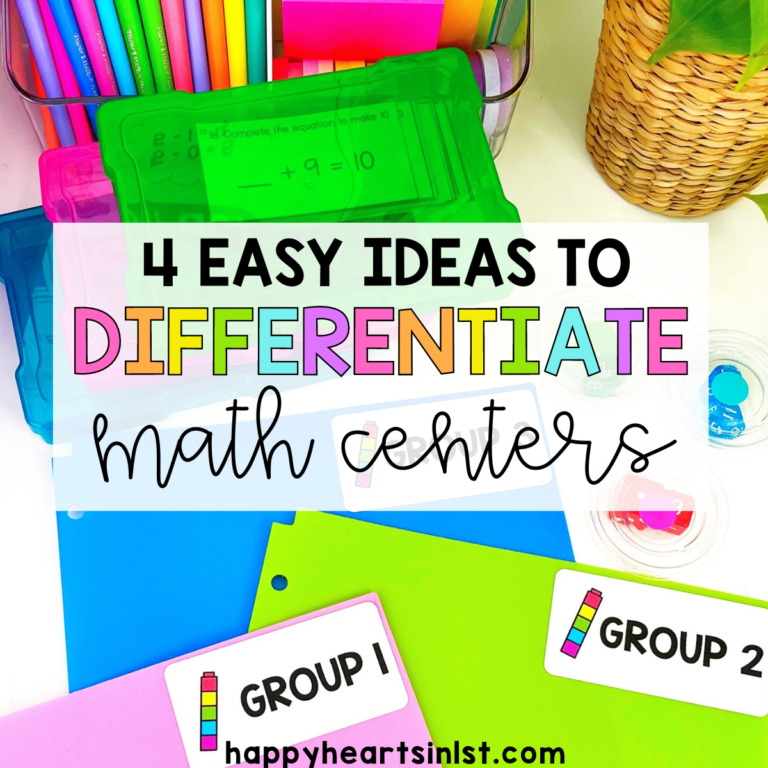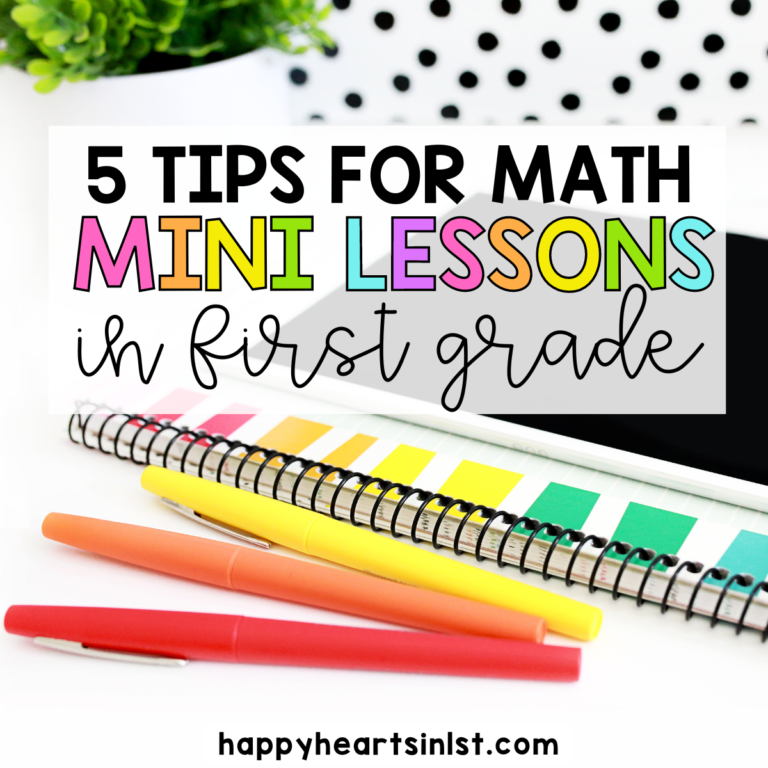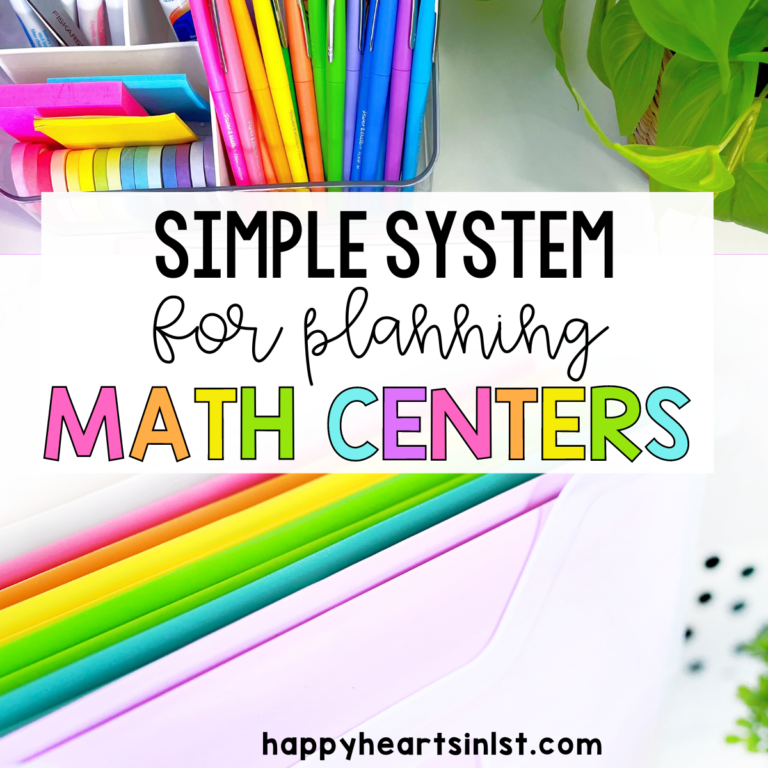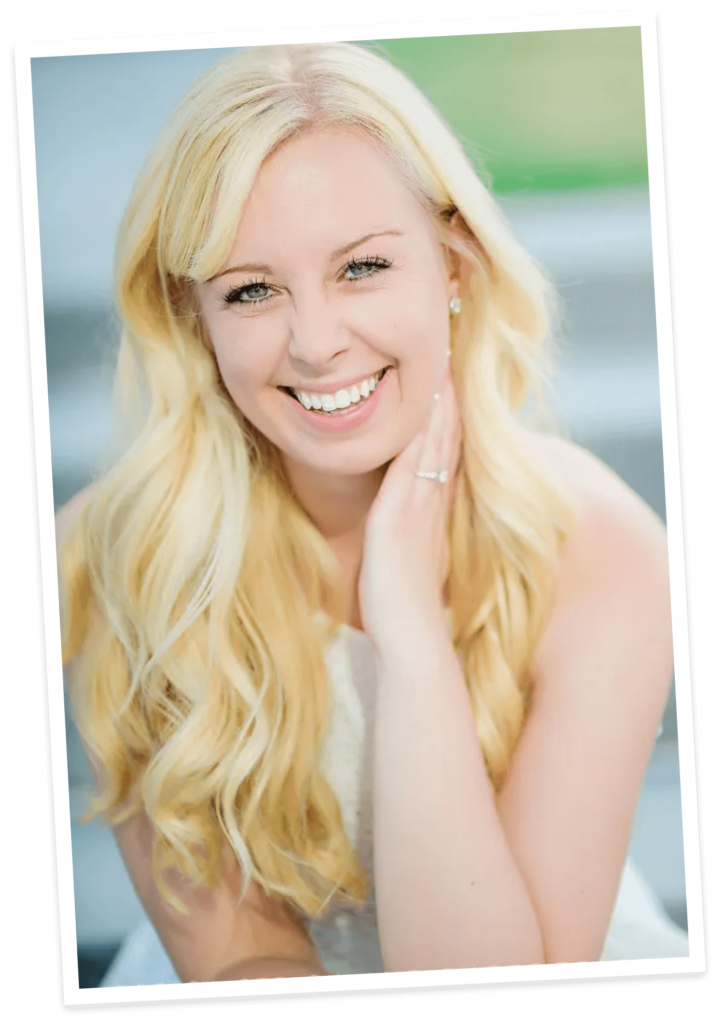Do you use math manipulatives in your kindergarten, first grade, or 2nd grade classroom? Math manipulatives are my favorite way to create concrete learning experiences for my 1st graders! We use them daily in our lessons, during small groups, and during math centers! In this post I’ll share my favorite tips and tricks for organizing math tools in your classroom! I’m also sharing my favorite labels for creating beautiful and functional organization system!
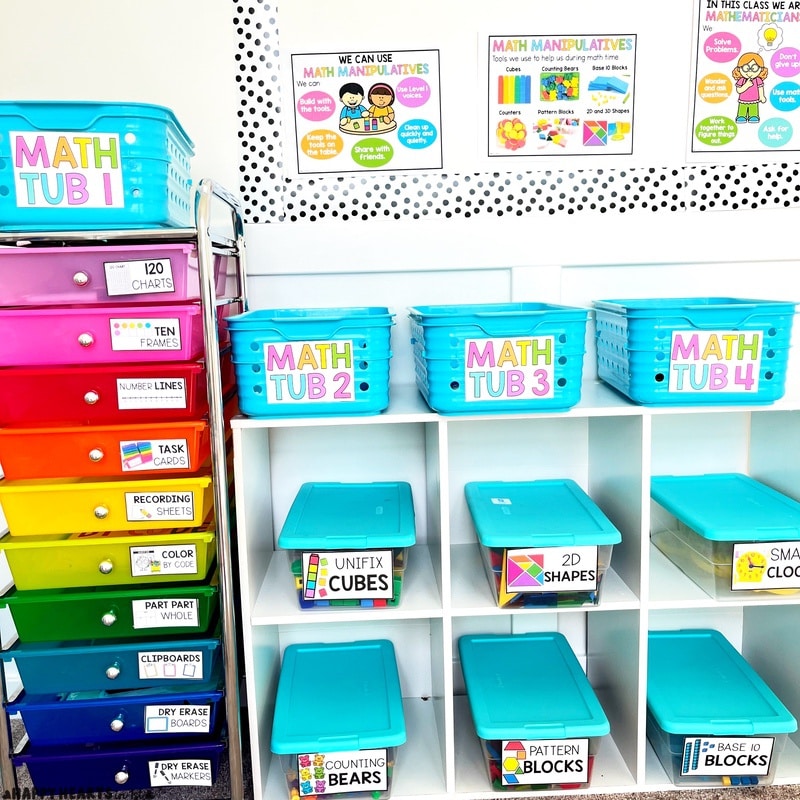
Why use math manipulatives?
Math manpiulatives are critical for our little learners in K-2! They provide a hands-on, concrete way for students to understand abstract mathematical concepts. Children in K-2, are still developing their ability to think abstractly. Manipulatives—such as counting cubes, base ten blocks, and pattern blocks—allow students to physically explore numbers and shapes, making complex ideas like addition, subtraction, and geometry more accessible.

How I use Math Manipulatives in my 1st Grade Classroom
We use math manipultives almost daily during our math small groups. I don’t spend a ton of time prepping fancy games and activities! Instead, most of our small group time is spent practicing with individual dry erase boards or math mats and manipulatives!
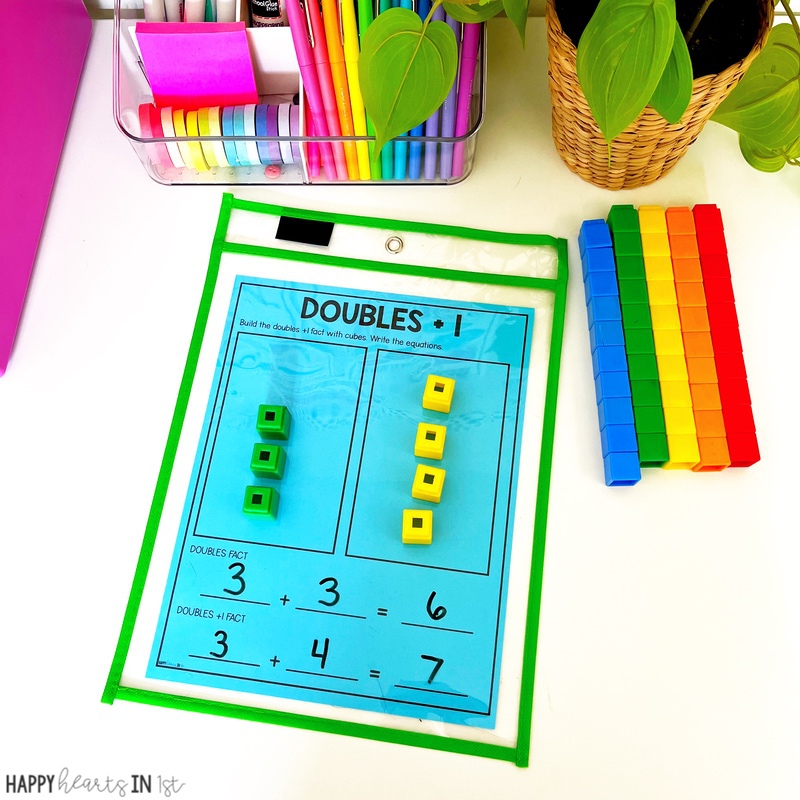
We use a CRA Instructional Approach or a Concrete-Representational-Abstract approach. We always start any new math skill with concrete learning experiences. This means students are working with math manipulatives and real world problems. When students are ready, we move to the representation stage. This means we are using drawings, tallies, dots, etc. to model problems instead of concrete objects. Finally, we move to the abstract (using only numbers and equations to solve problems.)

Along with using math maniulatives during our math small groups, I also like students to have access to some math manipulatives during our whole group lessons! During our mini lessons we sometimes need tools such as counters, cubes, number lines, ten frames, etc.! I wanted a way for students to easily access these materials without taking a ton of time to pass them out each day! (more on this later in the post! 😉)
Finally, I wanted to have some manipulatives available to students to use independently during math centers or any seat work!
Why is math manipulatives organization important?
Before creating a system for all of my math manipulatives, they all lived crammed in a cabinet unlabeled 😱 There was no rhyme or reason and I was always digging through trying to find what I needed for the day!
I was wasting so much time that I finally decided I needed an overhaul! Here are the benefits I noticed once I finally got a system in place:
💗 Streamlined my planning and prep process: I finally had everything I needed right at my fingertips
💗 Students had easier access to the manipulatives they needed and were able to find what they needed independently.
💗 Clean up and transitions became so much easier! Instead of putting all the manipulatives away at the end of each lesson, students were able to share that responsibility. They knew exactly how and where to return the manipulatives.

Creating a system for your math manipulatives
Here’s my system for organizing math manipulatives in 3 easy steps:
Step 1: Grouping by Type and Purpose
I went through all of my manioulatives and sorted them by type. Here were some of my categories:
- Manipulatives and tools I wanted students to always have access to (such as counters, dice, and number lines)
- Manipulatives that I used frequently for small groups (such as cubes and rekenreks)
- Manipulatives that I only pulled out every once in awhile (math balances, small clocks, etc.)

Step 2: Choosing the perfect storage containers
Clear Bins
Most of my manipulatives are stored in clear bins. This makes it easy to see what’s inside! I recommend getting bins with lids so that they are easy to stack.
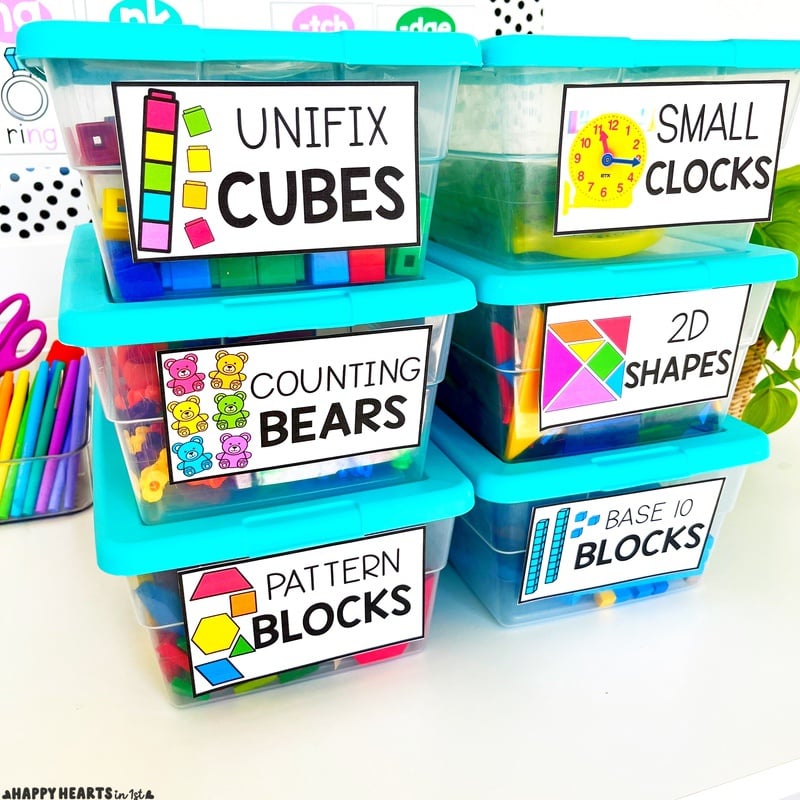
I use two different sizes of bins to store my manipulatives. The 6 qt bins are perfect for pattern blocks, base 10 blocks, counting bears, etc.
Here are bins similar to the ones I’ve used for years!
The small clip boxes are great for smaller manipulatives like dice, dominoes, spinners, and sand timers. I have these sterilite small clip boxes!

Storage Shelves
For manipulatives that I want students to be able to access, I keep some bins on a 6 cube organizer with our daily math tubs. I call this area of our classroom the Math Zone! Students can easily get the tubs when needed and put them back! I can also grab them easily if I need them for a small group lesson.
These bins are also available to students to use in the mornings as morning tubs and during inside recess!
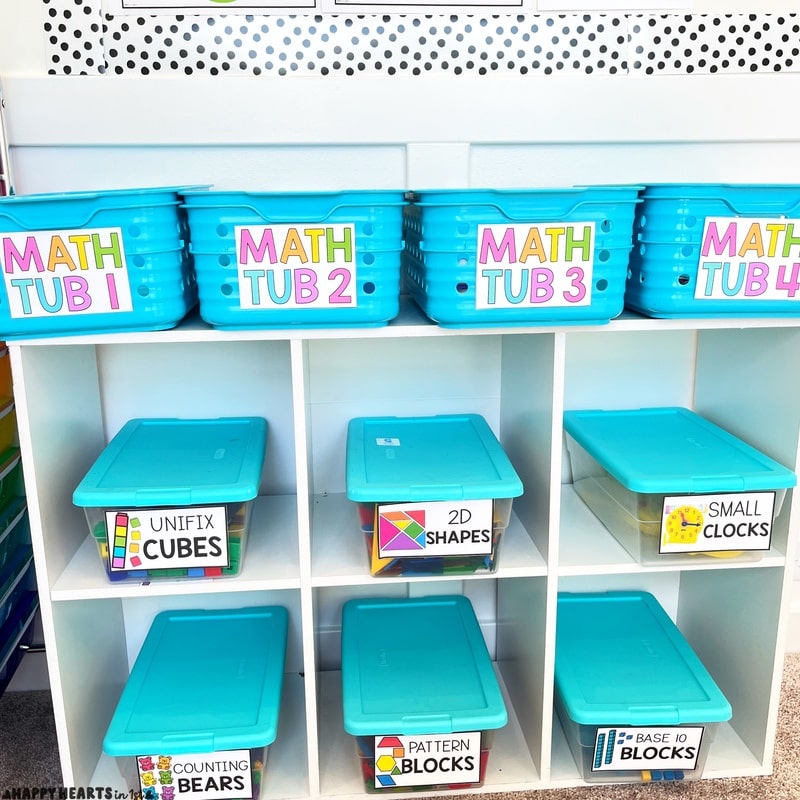
I rotate the bins I have out (although some stay out most of the time!)
Other bins that aren’t on the 6 cube organizer live in my teacher cabinet! This makes it easy for me to take out the things I need for my lessons.
Rainbow Cart
For other tools that I want students to have easy access to, I use a rainbow cart! I keep our cart right next to our math tubs in the math zone in our classroom! Students know that anytime they need a number line, dry erase board, etc, they are welcome to go go grab one from the cart! They also know the procedures for neatly putting materials away when they are finished.
I also keep fast finisher activities such as addition and subtraction color by codes and sets of math task cards. If they complete a math center and have extra time, they can grab one of these activities and get to work!
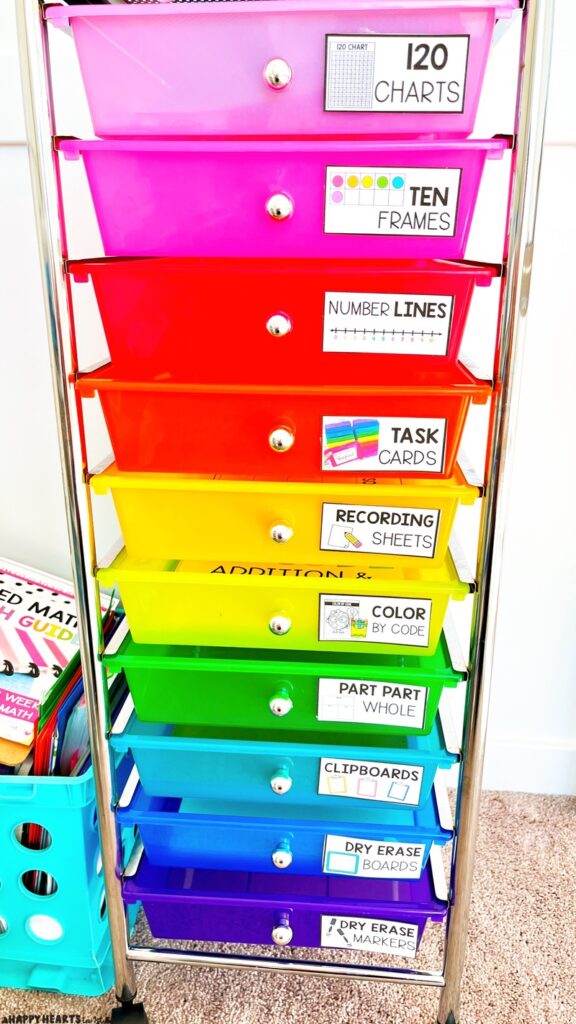
Step 3: Labeling everything!
This was my favorite part of the process! 😍 One of the keys to getting (and staying!) organized was using these math manipulative labels!
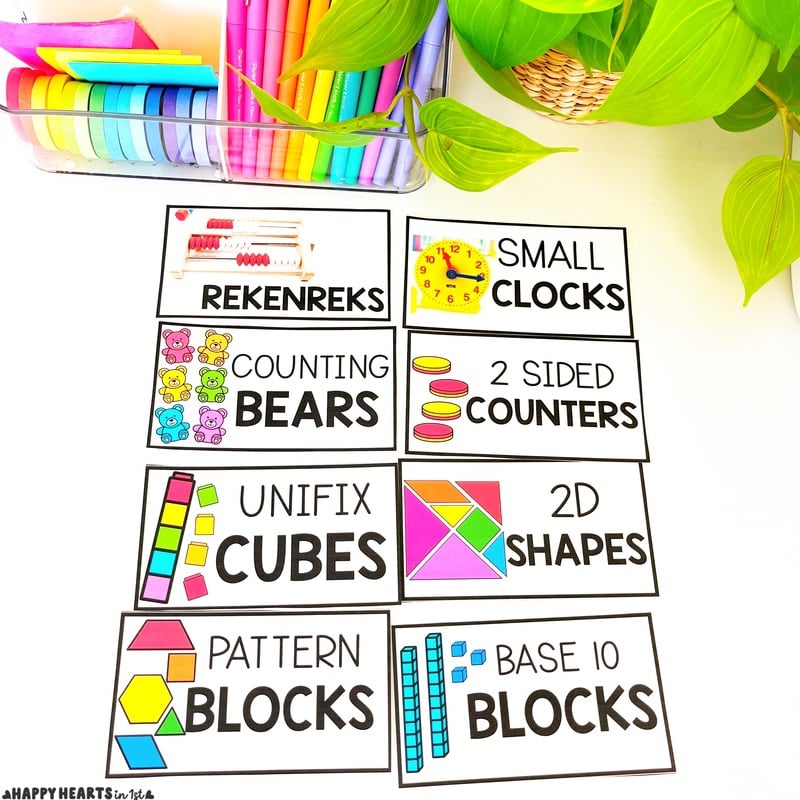
I wanted a set of clean looking labels with a clear picture to help students easily identify where things belong. This not only makes it easier for them to find the materials they need but also simplifies the cleanup process, ensuring that items are returned to their correct places at the end of each lesson.
I love having a cohesive look for all of my materials. I created these labels in two different sizes. The bigger labels are perfect for the 6 qt bins. I used the smaller sized labels for the clip boxes and rainbow cart drawers.

I also like labeling the cubbies where the bins go! This makes it even easier for students to know where everything belongs!
By incorporating labels into your classroom organization system, you’ll not only streamline the way materials are stored but also support your students in learning independence and organizational skills!
Introducing Math Manipulatives at the Beginning of the Year
Before students are free to use manipulatives as they need them, it’s important to explicitly teach procedures. We spend the first week of school learning about the different kinds of math manipulatives and ways to use them. You can read more about how I introduce them here!

You can find my favorite slides for introducing math manipulatives in my Number Sense 1st grade math unit!
Creating Mini Math Toolkits for Students
The final way I organized my math manipulatives and tools is by creating mini math toolkits for my students! At the beginning of the school year, I like to give all my students a small Math Tool Kit with some simple math tools and manipulatives. These are items that they can use during our Math Mini Lesson time or when they are working independently. It’s SO nice for them to have easy access to the tools rather than passing them out each time.
You can grab the math tool kit for free here!

Math Manipulative Labels for Organization
Organizing math manipulatives in the K-2 classroom is more than just tidying up—it’s about creating an environment where students can easily access the tools they need to be successful.
If you want to grab these math manipulative labels for your classroom, you can find them here!

